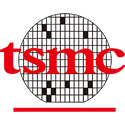
Apple Unveils the New 13- and 15-inch MacBook Air with the Powerful M3 Chip
Apple today announced the new MacBook Air with the powerful M3 chip, taking its incredible combination of power-efficient performance and portability to a new level. With M3, MacBook Air is up to 60 percent faster than the model with the M1 chip and up to 13x faster than the fastest Intel-based MacBook Air. And with a faster and more efficient Neural Engine in M3, MacBook Air continues to be the world's best consumer laptop for AI. The 13- and 15-inch MacBook Air both feature a strikingly thin and light design, up to 18 hours of battery life, a stunning Liquid Retina display, and new capabilities, including support for up to two external displays and up to 2x faster Wi-Fi than the previous generation.
With its durable aluminium unibody enclosure that's built to last, the new MacBook Air is available in four gorgeous colors: midnight, which features a breakthrough anodization seal to reduce fingerprints; starlight; space gray; and silver. Combined with its world-class camera, mics, and speakers; MagSafe charging; its silent, fanless design; and macOS, MacBook Air delivers an unrivaled experience—making the 13-inch model the world's bestselling laptop and the 15-inch model the world's bestselling 15-inch laptop. Customers can order starting today, with availability beginning Friday, March 8.
With its durable aluminium unibody enclosure that's built to last, the new MacBook Air is available in four gorgeous colors: midnight, which features a breakthrough anodization seal to reduce fingerprints; starlight; space gray; and silver. Combined with its world-class camera, mics, and speakers; MagSafe charging; its silent, fanless design; and macOS, MacBook Air delivers an unrivaled experience—making the 13-inch model the world's bestselling laptop and the 15-inch model the world's bestselling 15-inch laptop. Customers can order starting today, with availability beginning Friday, March 8.
























































